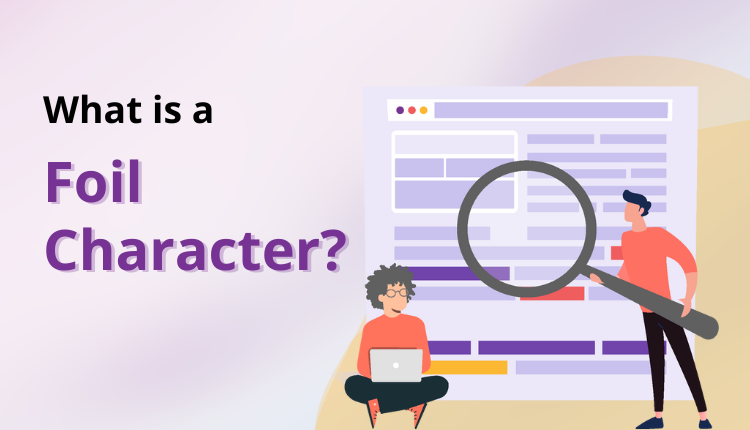Literature is a vibrant tapestry intertwined with characters that breathe life into stories. Among such characters, there are some that have a crucial function aside from the protagonist and the antagonist. Meet the foil character, a literary technique created to highlight the attributes, intentions, and development of the main character. But what is a foil character? Grasping this idea not only improves your reading but also enriches your own writing abilities. Let’s explore the interesting world of foil characters and learn about their influence in literature!
What Is a Foil Character?
A foil character is a literary tool to point out the characteristics of another character, typically the protagonist. This comparison can provide deeper insight into the main character’s personality, decisions, and motivations.
Foils usually have features opposite or very dissimilar to those of the central character. By standing these characters alongside each other, writers achieve a more vivid storytelling experience, enabling readers to appreciate the depth of every figure more effectively. The exchange between foils gives depth to fiction.
The Purpose of a Foil Character in Literature
Foil characters play an important function in literature. They highlight the protagonist’s character by bringing out contrast. This contrast assists readers in a deeper understanding of the main character, showing both their strengths and weaknesses.
Through such comparison, foil characters can bring out major themes and conflicts of a story. By displaying contrasting point of views or values, they make the story more enriching and allow for character development. Their existence tends to propel the plot, hence their importance in storytelling dynamics.
Foil Character vs. Antagonist: What’s the Difference?
A foil character is used to point out characteristics of the protagonist by comparing their attributes. Through this comparison, our insight into the main character’s motivations and development is enhanced throughout the narrative.
Conversely, an antagonist directly opposes or contradicts the protagonist. Whereas a foil may aid or bolster the central character’s journey, an antagonist is intended to introduce conflict and tension. Both are important but for different reasons within a narrative framework.
Common Traits of a Foil Character
Foil characters usually have contrasting characteristics that bring out the qualities of the protagonist. They can be opposites or complementary characters, highlighting differences in values, beliefs, or behavior. Contrast serves to intensify the reader’s understanding of the main character.
Their limited growth is another characteristic. Foils are often created to fulfill a particular function and may not experience great development themselves. They exist mostly to add to the story by shedding light on important parts of another character’s development and decisions throughout the narrative.
Famous Examples of Foil Characters in Literature
Sherlock Holmes and Dr John Watson are one of the most recognizable foil pairs in Arthur Conan Doyle’s detective novels. Holmes, whose great deductive abilities, contrasts with Watson’s more down-to-earth and empathetic nature. This contrast accentuates their strengths.
Another famous example is in Shakespeare’s “Hamlet.” Laertes is the foil to Hamlet himself, demonstrating two different modes of action and revenge. When Hamlet procrastinates, Laertes takes swift action, highlighting Hamlet’s inner conflict throughout the play.
How Foil Characters Boost a Story
Foil characters serve an important function in deepening a story. They contrast with the main character to emphasize important traits and motivations, which help readers better comprehend the main character. This contrast builds tension and deepens the plot.
In addition, foil characters tend to push development and maturity for heroes. Through contrasts, they redefine the hero’s beliefs or decisions, triggering change. This interplay keeps readers hooked and interested in both characters’ experiences throughout the story.
How to Write a Foil Character in Your Own Stories
Building a foil character requires planning. Begin by describing your protagonist’s characteristics, strengths, and weaknesses. Your foil should have opposite traits that bring these into focus. For instance, if your main character is shy, design a more outgoing opposite.
Second, consider how they interact with each other in the story. The differences should stimulate growth or change in your main character. Through dialogue and circumstances, show their differing points of view and choices effectively. The tension created can enrich the story and involve readers on an intellectual as well as emotional level.
How Trinka Grammar Checker Can Help
Describing foil characters is often complicated, and it’s important to be clear. Trinka Grammar Checker assists in clarifying your writing by pointing out grammatical mistakes and offering corrections. It guarantees that your ideas are put across without being muddled by grammatical faults.
Additionally, Trinka’s computer-generated suggestions are context-specific, adapting to your writing voice. Whether you’re writing an intricate analysis or a basic story outline, it helps make it more readable and engaging. You can thus concentrate on creativity while keeping the writing polished across your works.
Conclusion
Knowing what a foil character is can really improve your enjoyment of literature. These characters act as mirrors, reflecting the characteristics and features of the main character or other important characters in the story. Through contrasting, they enrich themes and improve narratives.
Whether you’re reading an old favorite or writing your own story, understanding foils will provide you with a more refined understanding of character development. With the help of tools like Trinka Grammar Checker, writing effective foil characters is easier than ever. Take up this literary tool to improve your storytelling skills—it’s a powerful tool that every writer needs to know to write more effective stories.

